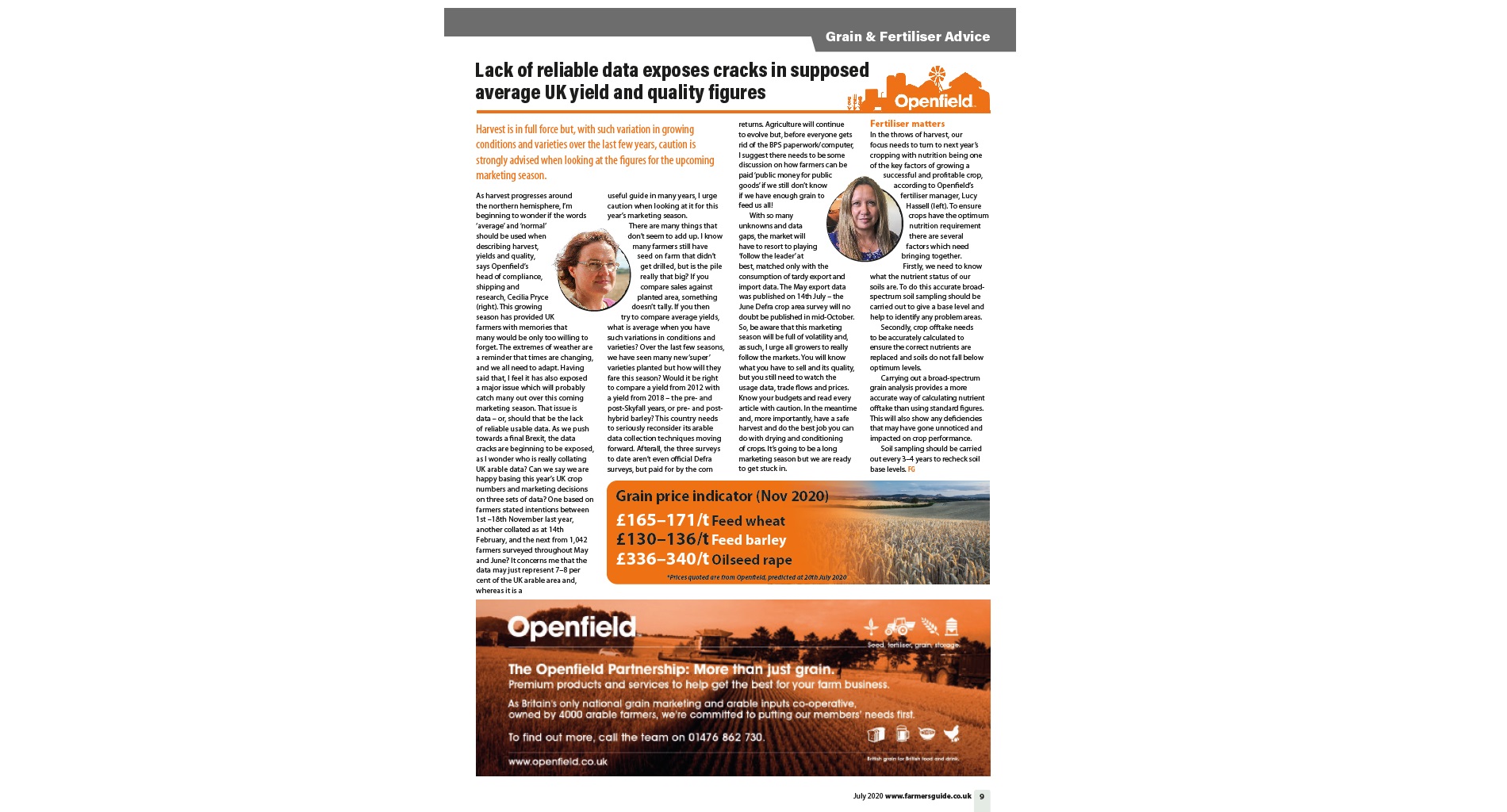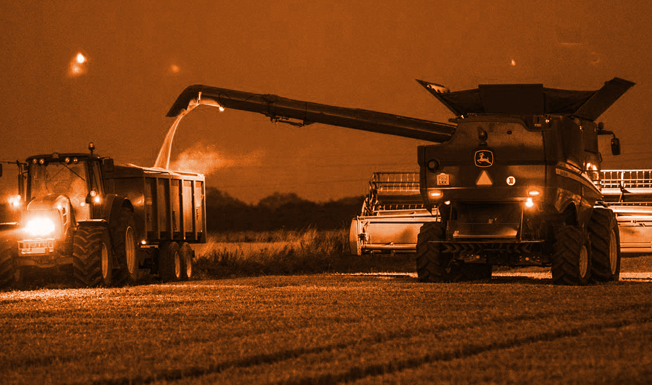Lack of reliable data exposes cracks in supposed average UK yield and quality figures
Harvest is in full force but, with such variation in growing conditions and varieties over the last few years, caution is strongly advised when looking at the figures for the upcoming marketing season.
As harvest progresses around the northern hemisphere, I’m beginning to wonder if the words ‘average’ and ‘normal’ should be used when describing harvest, yields and quality, says Openfield’s head of compliance, shipping and research, Cecilia Pryce. This growing season has provided UK farmers with memories that many would be only too willing to forget. The extremes of weather are a reminder that times are changing, and we all need to adapt. Having said that, I feel it has also exposed a major issue which will probably catch many out over this coming marketing season. That issue is data – or, should that be the lack of reliable usable data. As we push towards a final Brexit, the data cracks are beginning to be exposed, as I wonder who is really collating UK arable data? Can we say we are happy basing this year’s UK crop numbers and marketing decisions on three sets of data? One based on farmers stated intentions between 1st –18th November last year, another collated as at 14th February, and the next from 1,042 farmers surveyed throughout May and June?
It concerns me that the data may just represent 7–8 per cent of the UK arable area and, whereas it is a useful guide in many years, I urge caution when looking at it for this year’s marketing season. There are many things that don’t seem to add up. I know many farmers still have seed on farm that didn’t get drilled, but is the pile really that big? If you compare sales against planted area, something doesn’t tally. If you then try to compare average yields, what is average when you have such variations in conditions and varieties? Over the last few seasons, we have seen many new ‘super’ varieties planted but how will they fare this season? Would it be right to compare a yield from 2012 with a yield from 2018 – the pre- and post-Skyfall years, or pre- and post- hybrid barley? This country needs to seriously reconsider its arable data collection techniques moving forward. Afterall, the three surveys to date aren’t even official Defra surveys, but paid for by the corn returns. Agriculture will continue to evolve but, before everyone gets rid of the BPS paperwork/computer, I suggest there needs to be some discussion on how farmers can be paid ‘public money for public goods’ if we still don’t know if we have enough grain to feed us all!
With so many unknowns and data gaps, the market will have to resort to playing ‘follow the leader’ at best, matched only with the consumption of tardy export and import data. The May export data was published on 14th July – the June Defra crop area survey will no doubt be published in mid-October. So, be aware that this marketing season will be full of volatility and, as such, I urge all growers to really follow the markets. You will know what you have to sell and its quality, but you still need to watch the usage data, trade flows and prices. Know your budgets and read every article with caution. In the meantime and, more importantly, have a safe harvest and do the best job you can do with drying and conditioning of crops. It’s going to be a long marketing season but we are ready to get stuck in.
Fertiliser matters
In the throws of harvest, our focus needs to turn to next year’s cropping with nutrition being one of the key factors of growing a successful and profitable crop, according to Openfield’s fertiliser manager, Lucy Hassell. To ensure crops have the optimum nutrition requirement there are several factors which need bringing together. Firstly, we need to know what the nutrient status of our soils are. To do this accurate broad- spectrum soil sampling should be carried out to give a base level and help to identify any problem areas. Secondly, crop offtake needs to be accurately calculated to ensure the correct nutrients are
replaced and soils do not fall below optimum levels. Carrying out a broad-spectrum grain analysis provides a more accurate way of calculating nutrient offtake than using standard figures. This will also show any deficiencies that may have gone unnoticed and impacted on crop performance. Soil sampling should be carried out every 3–4 years to recheck soil base levels.




